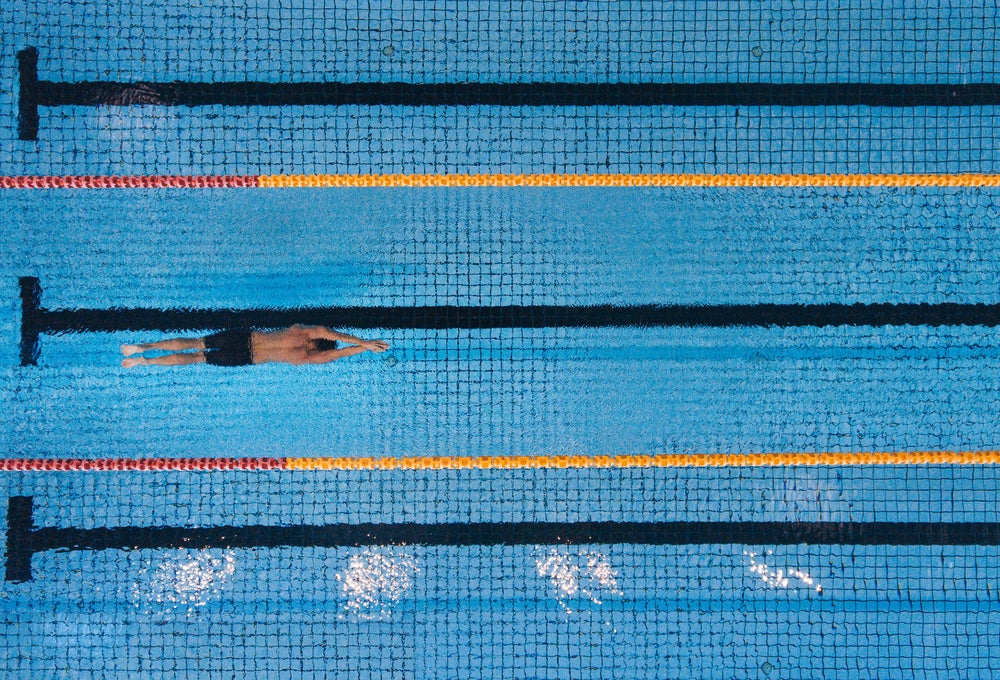Your DIY Guide to Maximizing Your Swim Stroke Potential

Photo: Shutterstock.com
No coach? No camera? No problem. Consider this your quick and dirty guide to figuring out where you’re not maximizing your swim stroke potential, and how to fix it—all by yourself.
I’m usually one of the first out of the water in my wave in most races, so I assumed I had my stuff down. Then I met with Dominic Latella, co-owner and lead instructor at the SwimBox in Fairfax, Va., who quickly found flaws in my form. “You’re all over the place,” he said after observing my splashy stroke. ”It’s not just about going fast—you should be trying to make the fewest amount of movements to move forward.” In other words, we can all get more efficient, no matter how fast we already are. Without the luxury of private coaching or underwater cameras to critique your stroke, you can still figure out where you’re wasting precious energy and work on those issues with drills, says Latella. Here,
we help you do just that.
The problem: An unbalanced kick
You have it if: Your legs tend to separate by more than six inches while you swim.
The drill: Toy soldier kick. Grab the pool wall for support and slowly kick while keeping your knees and ankles stiff (if you can’t actually lock your knees, simply try to reduce as much bend as you can). Keep your feet close to the surface and think about pressing your belly button into your spine as you kick, which will help you engage your core and improve your balance.
The problem: Poor rotation and streamline
You have it if: You’re arching your back or your spine is bending forward as you swim.
The drill: Side kick. Start at one end of the pool by kicking with your hands by your sides, keeping your neck long. After a few kicks, slowly rotate your body to one side. Kick for a few beats, then slowly rotate back to center and repeat on the other, making sure to power the rotation from your core without using your hands.
The problem: Poor core control
You have it if: You feel like you’re going to roll over on your back as you swim, or that you lack balance in the water.
The drill: Windmill. Create a big windmill stroke by pointing your fingertips straight up toward the ceiling. Your chest, hips and legs will rotate sideways. Once your arm travels past your shoulder, try to rotate your hips to help place your arm back into the water. Big windmill strokes help rotate your body to 90 degrees as you swim, which works on body rotation and core control.
The problem: Poor recovery
You have it if: Your arm travels directly on top of you or behind you during your recovery.
The drill: Fingertip drag. After you’ve taken your first pull, keep your fingertips just dipped into the surface of the water and drag them along as your continue to finish your stroke. Continue on each side. This drill encourages efficient recovery and sets you up for an optimal catch.
The problem: An ineffective catch
You have it if: You drive your hands down as they enter the water instead of reaching forward.
The drill: Catch-up. Start with both hands in front of you (it may help to interlock your thumbs, to hold your position). Take a stroke with one arm until it meets the opposite arm in front of you, entering the water with your fingers, not your thumb. Kick for a few beats, then switch to the opposite arm and repeat. Keep your arms shoulder-width apart when they meet in the center. During recovery, make sure your palm faces the back of the pool, not the bottom.
The problem: Bad alignment
You have it if: You don’t swim in a straight line.
The drill: Paddlehead. Take a hand paddle and place it on the crown of your head (it should overlap the forehead and the front half of the top of your head). Push off the wall, keeping your head still so the paddle remains in place. Practice this without breathing at first; once you’ve got the head position down, then start again and take a breath every few strokes. Keeping the paddle in place increases awareness of your head position, body alignment and breathing.